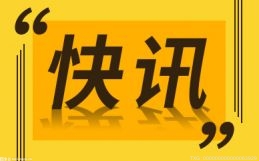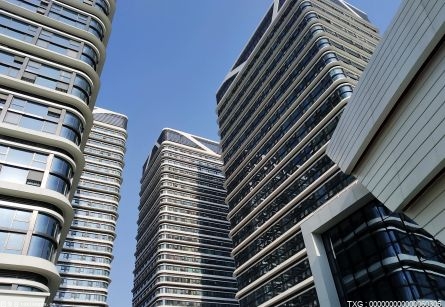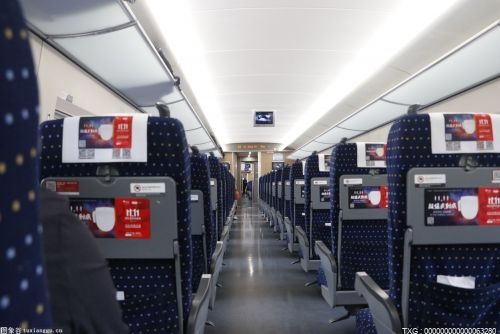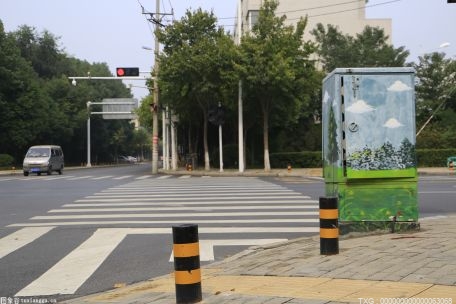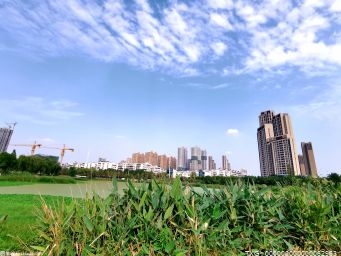我们身处什么时空(Where We Are in Place and Time),是广州暨大港澳子弟学校(ASJ)PYP项目的学子们本学期探究的第三个超学科主题。这是一个对人类所处时空进行探究的主题。
我们探究我们在时空中的方位;个人的历史;家庭和旅行;人类的各种发现、探索和迁徙;从本地和全球的视角考察个人与文明之间千丝万缕的联系。
近日,G1-G5的同学们,热情邀请各位家长走进校园,开展了一次精彩的结题展。
 【资料图】
【资料图】
G1Topic 住宅
HOUSES
中心思想:世界各地的人们利用他们的自然环境设计和建造不同的住宅。
在本学年第六个超学科主题“我们身处什么时空”下,我们共同迎来了最后一个探究单元“Houses”。本单元的中心思想是“世界各地的人们利用他们的自然环境设计和建造不同的住宅”。在初步了解了探究主题和中心思想后,我们围绕三条探究线索逐步展开了第六单元的探究学习历程。
由第一条探究线索“世界各地不同的住宅”出发, 我们一年级的孩子们学习了世界的七大洲,知道了世界各地不同类型的住宅,如冰屋,蒙古包,”长脚的房子“等等。进而我们开启了第二条探究线索“世界上各种气候和可利用的资源”的学习,学生们发现,原来地球上的各大洲的气候都是不一样的,甚至在同一个国家,也存在着不同的气候。由于生活的地理位置差异,人们的可利用资源也是不一样的,如靠近北极地区的人们会利用冰雪建造冰屋,而靠近赤道地区的人们会利用随处可见的竹木来建造房屋。
反思阶段,孩子们开始思考自然环境对各种已建设好的住宅都有些什么影响以及如何减少其损害。
在结题展上,学生们向大家展示了他们所建造的来自世界各地不同的住宅模型,并且献上了他们日复一日练习的歌曲《We’re the World》,让我们一起来共同欣赏吧!
G2Topic 旅行
TRAVELS
中心思想:旅行促发变化并能够带来新的机遇。
Travels是我们二年级同学们本学期探究的第三个主题。围绕探究主题:“旅行”,以“社会学”为核心学科,学生将会从三个方面展开探究:人们进行的各类旅行;旅行时的选择和决定;旅行中所体验到的变化。
这个单元的重点融合学科有社会学和语言学。学生通过联系个人的旅行经历,去学习各种行的知识。在加深对中心思想“旅行促发变化并能够带来新的机遇。”理解的同时,开阔学生的国际视野和国际情怀,提升学生的社交技能和沟通技能。
本次结题活动,孩子们化身为不同国家或地区的小“导游”,邀请家长作为“游客”,带着护照和地图打卡世界各地,领略不同国家或地区的美景美食等。
每一位小“导游”都非常的热情认真地为“游客”讲解。每一位“游客”也都是收获满满。真是太赞啦!
G3Topic 家乡
HOMETOWN
中心思想:种特征形成了家乡之间的差异。
最美是家乡,经过了六周的家乡文化探究活动后,G3的孩子迎来了本学期的最后一个结题展活动。
在结题展上,孩子们通过讲解探究过程,展示探究过程作品,演唱粤语歌曲等活动带领家长们进入到我们的探究历程中。
在总结性评估活动“我和我的家乡”中,孩子们纷纷扮演起家乡代言人,通过家乡海报生动形象地向家长们介绍了自己的家乡传统习俗、特色美食、地貌景点等。
孩子们还带来了各自家乡的美食供大家品尝,一场舌尖上的家乡盛宴热闹开幕。孩子们用自己的行动宣传推广家乡文化,得到了众多家长和老师的掌声和点赞。
本次的探究活动,不仅激发了孩子们对家乡的热爱之情,增强了身份认同感,更培养了他们勤于思考,积极探究的品质,进一步锻炼了他们的研究能力以及交流沟通能力。乡土难忘,桑梓情深!希望我们人人都能为家乡建设增砖添瓦,贡献自己的力量。
G4Topic 迁徙
MIGRATION
中心思想:迁徙是为了应对挑战,风险和机遇。
四年级同学这次的探究单元主题是“人类迁徙”,这一单元探究的中心思想是: “人类迁移是为了应对不同的挑战、风险和机遇。”
根据迁徙主题的三条探究线索:人类迁徙的原因;人类迁徙对社会、文化和个人的影响;以及迁徙的利与弊。
孩子们利用Ipad、书籍等多种方式进行了资料的搜集,并用自己喜欢的方式进行记录和整理。他们查阅了人类历史上的重大迁徙事件,如:闯关东、走西口、下南洋等。
在探究过程中,孩子们还采访了家人朋友的迁徙/移民的经历,拍摄了视频,做了采访记录等。本次孩子们在结题展上分成四个小组展示:文成公主进藏,加州淘金热,叙利亚难民偷渡,中国春运。结题展上,孩子们分享了精美丰富的海报、路线图、模型、服饰等,用不同的形式展示了自己在本主题中的所知所学;他们流畅地讲解,有条理地分析,快乐地分享。每一个有理有据的观点,都让人印象深刻、惊喜万分。
本轮探究,孩子们敢于直面困难,迎接各种未知的挑战,充分激发了学生的内驱力,让他们成为了学习的主人,在成为终身学习者的路上不断前进着!下面让我们一起来欣赏一下四年级孩子们的精彩表现吧!
G5Topic 古代文化
ANCIENT CIVILIZATION
中心思想:古代的文明连接着过去和现在的社会。
五年级同学在本次“古代文明”主题的结题展中,分别展示了不同国家和地区的古代文明,包括四大文明古国(古巴比伦,古埃及,古印度和古中国),以及古罗马、古希腊和玛雅文明等。
同学们准备的内容丰富多彩,不仅制作了精美地海报,还有各种手工实物展示,包括用乐高搭建的埃及金字塔和用于农业灌溉的沙杜夫,以及古罗马斗兽场等伟大建筑。
除此之外,学生也在服饰上展示出了古代文明的特色,包括古中国的汉服,古罗马的头盔,古巴比伦的披挂式服装等等。
在本次结题展中,学生的能力得到了充分的锻炼,在介绍海报的过程中,学生们不仅巩固了所学知识点,而且还锻炼了自己的表达能力。
在实物展示的准备过程中,学生们不仅加深了对所探究内容的理解,还提高了自己的动手能力。接下来让我们一起欣赏一下学生们的精彩瞬间吧!
探究,是ASJPYP项目学子们的学习方式。对世界充满好奇,对未知充满探索精神,勇于面对困难与挑战,用自己学习过的知识和技能去解决学习和生活中层出不穷的问题。
善于思考,富有创新精神,用自己的眼睛去观察世界,用自己的双手去创造世界,用自己的双脚去丈量世界,是我们ASJPYP项目学子们源源不竭的学习热情与学习动力。
愿我们永远以梦为马,不负韶华。让世界因为我们的存在而更加精彩!
Where We Are in Place and Time? This is the third interdisciplinary theme explored by the students of the ASJ PYP project this semester. This is a theme of exploring the time and space of humanity.
We explore our position in time and space; Personal history; Family and travel; Various human discoveries, explorations, and migrations; Examining the intricate connections between individuals and civilizations from both local and global perspectives.
Recently, G1-G5 students warmly invited parents to enter the campus and held a wonderful closing exhibition.
G1Topic 住宅
HOUSES
Central Idea: People around the world use their natural environment to design and build different homes.
Under the sixth transdisciplinary theme of this school year, "where we are in place and time", we ushered in the last inquiry unit "Houses".
The central idea of inquiry in this unit is "People around the world use their natural environment to design and build different houses". After a preliminary understanding of the topic and central idea of the inquiry, we gradually launched the inquiry learning process of the sixth unit around the three lines of inquiry. Starting from the first line of inquiry "different dwellings around the world", our first grade children learned about the seven continents of the world, and learned about different types of dwellings around the world, such as igloos, yurts, "houses with long feet", etc. wait. Then we started the second line of inquiry "various climates and available resources in the world". with different climates.
Due to the difference in geographical location of life, the resources available to people are also different. For example, people near the arctic will use ice and snow to build igloos, while people near the equator will use bamboo and wood that can be seen everywhere to build houses. During the reflective stage, the children began to think about how the natural environment affects various built homes and how to reduce their damage.
In ourexhibition, the students showed everyone the different house models they built from all over the world, and presented the song "We"re the World" they practiced day after day. Let"s enjoy it together !
G2Topic 旅行
TRAVELS
Central Idea: Travel inspires change and can lead to new opportunities.
Travels is the third topic that our G2 students explored this semester. Around the theme of inquiry "Travel", with "sociology" as the core subject, students explored from three aspects: types of travel; people make choices and decisions when they are travelling; people experience changes when they are travelling.
This unit focuses on the integration of sociology and linguistics. Students learned all kinds of knowledge about travels by connecting with their personal travel experiences. In deepening on the central idea "travel triggers changes and can bring new opportunities." At the same time, broaden students" international vision and minds, improve students" social skills and communication skills.
In this exhibition, the children became little "guides" in different countries or regions, inviting parents as "tourists" to travel around the world with passports and maps to enjoy the landmarks and food of different countries or regions. Every little tour guide" was very enthusiastic and serious to introduce to the "tourists". Every "tourist" was also full of harvest. That was awesome!
G3Topic 家乡
HOMETOWN
Central Idea:Various features formed the differences of hometowns.
The most beautiful place is hometown. After six weeks of exploring our hometown culture, the G3 children had their final exhibition of the semester. At the exhibition, the children led their parents into our inquiry journey by explaining the inquiry process, displaying their inquiry process works, and singing Cantonese songs.
In the summative assessment activity "I and my hometown", children played the role of hometown spokesperson and introduced their hometown"s traditional customs, special food and geographical attractions to parents through hometown posters. The children also brought their hometown"s food for everyone to taste.
The children used their own actions to promote their hometown culture and received applause and praise from many parents and teachers. This inquiry activity not only stimulated the children"s love for their hometown and enhanced their sense of identity, but also led them to become a good thinker and inquirer, and further exercised their research skills and communication skills. The hometown is unforgettable! We hope we can all contribute to the construction of our hometown.
G4Topic 迁徙
MIGRATION
Central Idea: Migration is driven by challenges, risks, and opportunities.
The theme of our fourth-grade exploration unit is "Human Migration." The central idea of this unit is that "human migration is a response to different challenges, risks, and opportunities."
Based on the three lines of inquiry related to migration: the reasons for human migration, the impact of human migration on society, culture, and individuals, and the pros and cons of migration, the students conducted research using various resources such as iPads and books. They collected information and recorded and organized it in their preferred ways.
They studied significant migration events in human history, such as the westward expansion in China, the California Gold Rush, and the migration of people to Southeast Asia. During the inquiry process, the students also interviewed family and friends who have experienced migration or immigration, filmed videos, and documented the interviews.
During the culminating exhibition, the students were divided into four groups to present their findings: the journey of Princess Wencheng to Tibet, the California Gold Rush, the Syrian refugees" clandestine journey, and the Chinese Spring Festival travel rush. At the exhibition, the students shared exquisite and rich posters, books, maps, models, and costumes, showcasing their knowledge and learning in various forms. Their fluent explanations, confident analyses, and bold sharing impressed everyone. They shared specific processes of human migration, the crises, challenges, and opportunities people face during migration, and the impact of human migration on both the departure and destination areas. Each well-supported viewpoint left a deep and pleasantly surprising impression.
Throughout this inquiry, the students courageously faced difficulties and embraced various unknown challenges. The exploration fully ignited their intrinsic motivation and transformed them into masters of learning, continuously progressing on the path to becoming lifelong learners. Now, let us enjoy the wonderful performance of our fourth-grade students!
G5Topic 古代文化
ANCIENT CIVILIZATION
Central idea: Ancient civilizations connect past and present societies.
In the exhibition of the topic of "Ancient Civilization", the fifth grade students showed different ancient civilizations, including the Four Great Ancient Civilizations (Babylon, Ancient Egypt, India and China), ancient Rome, ancient Greece, Maya civilization, etc.
The content prepared by the students is rich and colorful, including making exquisite posters, various manual physical displays, Lego models of the Egyptian pyramids and Sadouf for agricultural irrigation, the composition of Maya numerals and the five Mayan prophecies, great buildings such as the Colosseum, and the composition of Roman numerals. In addition, students also displayed specific cultural characteristics in their clothing, including ancient Chinese Hanfu, ancient Roman helmets, and ancient Babylonian drapery.
In this exhibition, students" abilities were fully exercised. In the process of introducing posters, students not only consolidated their knowledge points, but also exercised their expression skills.
In the preparation process for the physical display, students not only deepen their understanding of the explored content, but also improve their hands-on abilities. Next, let"s enjoy the wonderful moments of the students together!
Inquiry is the learning style of students in the ASJ PYP project. Full of curiosity about the world, full of exploration spirit towards the unknown, brave in facing difficulties and challenges, and using the knowledge and skills learned by oneself to solve endless problems in learning and life. Good at thinking, full of innovative spirit, observing the world with one"s own eyes, creating the world with one"s own hands, and measuring the world with one"s own feet. It is our ASJPYP project students" inexhaustible learning enthusiasm and motivation. May we always use our dreams as horses and not disappoint our youth. Make the world more exciting because of our existence!
标签:




